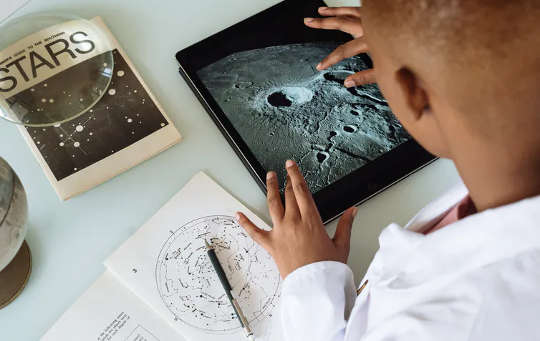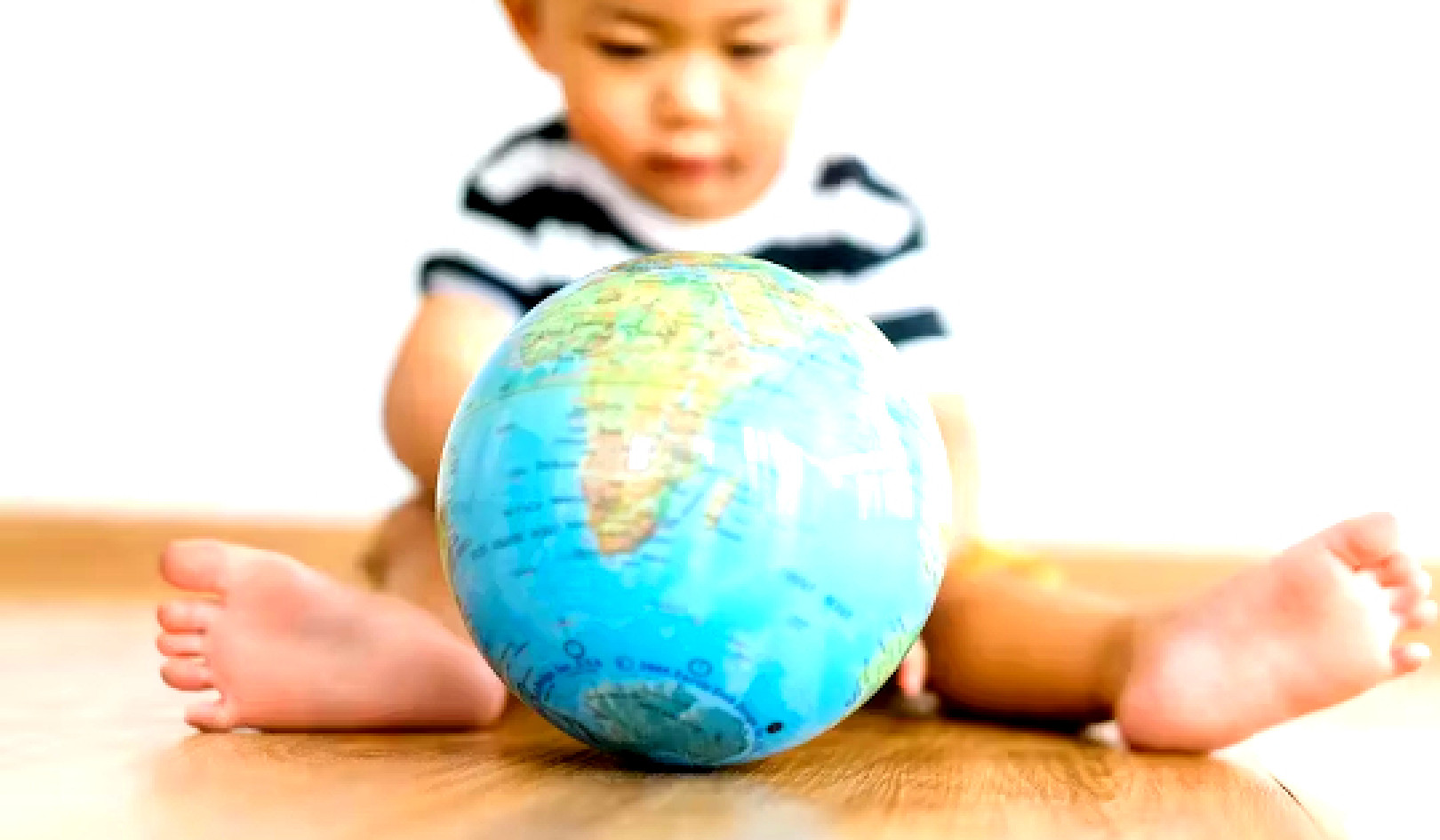 A holistic approach to growing children’s vocabulary could mean reading children stories about bears from fairy tales, science books and the news. (Shutterstock)
A holistic approach to growing children’s vocabulary could mean reading children stories about bears from fairy tales, science books and the news. (Shutterstock)
COVID-19 has been with us for a year, and the negative consequences of disrupted learning are becoming clear especially for our youngest learners. Researchers who studied children in Alberta report that in grades 2 and 3, children are six to eight months behind where they would usually be in reading. International researchers have projected the possibility of serious long-term consequences if learning losses are not addressed.
Because reading underlies all academic work and long-term educational success, building reading skills in children particularly between grades 1 and 4 should concern parents.
Many parents may know that reading to children is an activity that helps children thrive. What may be lesser known: while it’s important for children to have opportunities to choose favourite stories for parents to read aloud, it’s also helpful for parents to take the lead with sharing more complex reading materials.
Read alouds are about creating a shared reading activity where adults help children build their vocabularies through discussion, hands-on activities and imaginative ways to extend new word knowledge.
Academic vocabulary
As children get older, and particularly after Grade 4, understanding the meaning of more complex words and being able to use them is critical to children’s emerging abilities to tackle the more complex forms of analysis and writing expected from this age onwards.
More advanced words are ideally part of children’s oral vocabulary before they can independently spell or read them. This is because learning to read new words is not only about sounding them out but also learning what they mean. Having quality conversations with children about complex ideas is how parents can build children’s words and confidence to grow their knowledge.
Children’s knowledge of words associated with the language of school — an “academic vocabulary” — is associated with reading success and longitudinal outcomes even beyond high school. In the English language, such words tend to have Greek and Latin roots (like galaxy or transport). These words are often procedural (words like construct, provide, obtain, design) or used in expository writing that seeks to describe or explain.
To support the development of a rich academic vocabulary, parents can look for ways to have read alouds with children: Parents can select materials and engage in positive interactions that support children in making and understanding the connection between spoken language and letters on the page. Here are some tips for creating successful read alouds with kids.
1. What to read
Choose books with vocabulary that is a little higher than your child’s level, or news stories from newspapers, magazines or printed online news sources. Education scholar Maryanne Wolfe explains how reading on paper allows especially the young reader to focus on and interact with the print and pictures.
News sources are rich in information and vocabulary with endless reports, articles and stories of interest to children of all ages: you can choose stories from wildlife, sports, unusual happenings, health and wellness — including stories about the ongoing COVID-19 pandemic. Here, you can be mindful of your child’s particular concerns and level of emotional maturity.
 Parents can choose stories of interest to children from the newspaper. (Shutterstock)
Parents can choose stories of interest to children from the newspaper. (Shutterstock)
Children have lived their own COVID-19 year, and being hands-on with paper can help them make sense of their experiences while challenging them to develop language and literacy skills.
When children can scribble, highlight or cut out paper and physically manipulate different words, or post them on the wall for incidental revisiting, this helps reinforce learning. So does helping children make connections between new words, and words and stories already familiar to them.
2. Build bridges between stories
Keep an eye open for news stories that help children build bridges between more enriched and challenging vocabulary and stories children know and love. For example, in 2017 there was a news story about the rescue, rehabilitation and release of three tiny abandoned black bear cubs from a restroom in Banff, Alta. The story introduces many useful academic words. Parents might look for complementary stories about bears in other genres, like the classic children’s story The Three Bears, which contains mostly high-frequency words used for basic interpersonal communication like hungry, breakfast, small, bowl, tired, asleep, awoke.
3. The quality of adult attention matters
When parents and children are reading together, it’s important to have a shared gaze on the page — meaning parents are following what children are interested in and looking at. Children will perceive a sense of adult presence and shared experience, and enjoy pointing out letters, pictures or illustrations.
4. The quality of adult talk matters
Parents can elaborate meaning by helping with explanations, definitions, paraphrasing or synonyms. They can also model “think-alouds” to expose and model how people think about things: this means leading conjecture or inference through “I wonder”-type questions. Engaging children in shared conversation back and forth helps young learners make sense of new information.
5. Integrate technology
Digital literacy is key to children’s growth, too. With digital devices they can explore and learn much more about those three Banff bears. Video clips, newscasts and opportunities to hear, see and say new words all help children deepen their understanding of academic vocabulary and how it’s used in different contexts.
 Accessing interactive digital forms of knowledge can help children deepen their understanding of academic vocabulary. (Pexels)
Accessing interactive digital forms of knowledge can help children deepen their understanding of academic vocabulary. (Pexels)
6. Reinforce new words
Flashcards that record new words with definitions on the back can be kept at the ready or posted on the fridge for extended play and review.
Parents can also use flashcard words to create crossword puzzles using online tools. When children print the new words into a crossword puzzle, this helps create the neurocircuity and muscle memory that supports remembering and retrieving new words. Play flashcard word games that ask children to identify a word after given a definition by the parent. Intentionally use new words in daily conversations.
Kids need many exposures to words by hearing, saying, seeing and writing them before they “own” these words and can use them spontaneously. When they do, parents will notice and understand the magic of language and literacy learning among children.
7. Older children also benefit
Children up to Grade 4 and beyond benefit from read alouds too! In a study of Grade 4 students, education professor Sebastian P. Suggate and colleagues found that children learned more words from orally sharing stories than from reading independently.
Reading together encourages parents and kids to set aside time and focused attention on language and literacy learning. With a little adjustment, the same story can be adapted for a multi—age group of children.
Subscribing to your local newspaper, picking up local free community newspapers and making a habit of sharing interesting stories and information beyond the usual reading range of young learners could go a long way to closing the literacy gap we’ve noticed in the COVID-19 year.
About the Author
Hetty Roessingh, Professor, Werklund School of Education, University of Calgary

Related Books:
Here are 5 non-fiction books on parenting that are currently Best Sellers on Amazon.com:The Whole-Brain Child: 12 Revolutionary Strategies to Nurture Your Child's Developing Mind
by Daniel J. Siegel and Tina Payne Bryson
This book provides practical strategies for parents to help their children develop emotional intelligence, self-regulation, and resilience using insights from neuroscience.
Click for more info or to order
No-Drama Discipline: The Whole-Brain Way to Calm the Chaos and Nurture Your Child's Developing Mind
by Daniel J. Siegel and Tina Payne Bryson
The authors of The Whole-Brain Child offer guidance for parents to discipline their children in a way that promotes emotional regulation, problem-solving, and empathy.
Click for more info or to order
How to Talk So Kids Will Listen & Listen So Kids Will Talk
by Adele Faber and Elaine Mazlish
This classic book provides practical communication techniques for parents to connect with their children and foster cooperation and respect.
Click for more info or to order
The Montessori Toddler: A Parent's Guide to Raising a Curious and Responsible Human Being
by Simone Davies
This guide offers insights and strategies for parents to implement Montessori principles at home and foster their toddler's natural curiosity, independence, and love of learning.
Click for more info or to order
Peaceful Parent, Happy Kids: How to Stop Yelling and Start Connecting
by Dr. Laura Markham
This book offers practical guidance for parents to shift their mindset and communication style to foster connection, empathy, and cooperation with their children.
Click for more info or to order
This article is republished from The Conversation under a Creative Commons license. Read the original article.
























